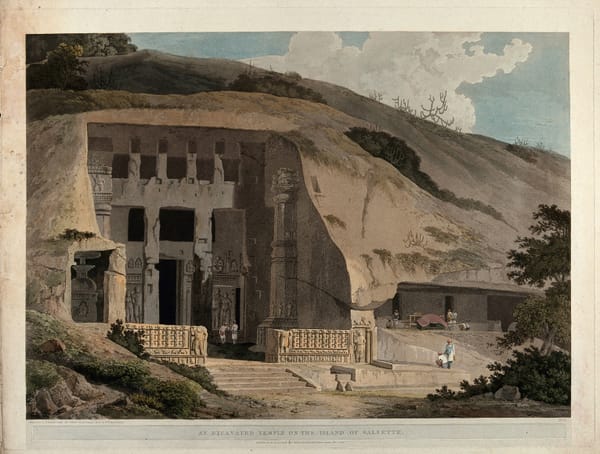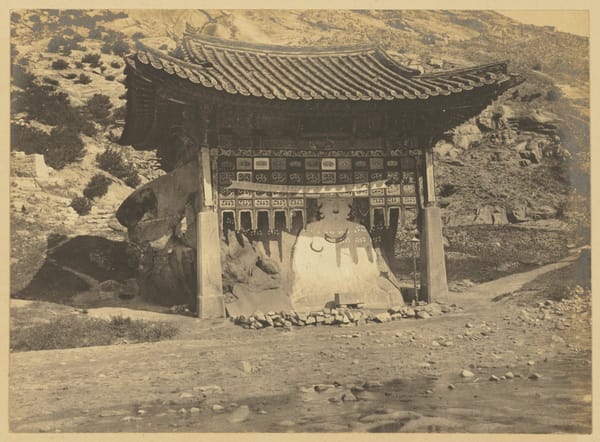Monkey's Offering of Honey at Pārileyyaka
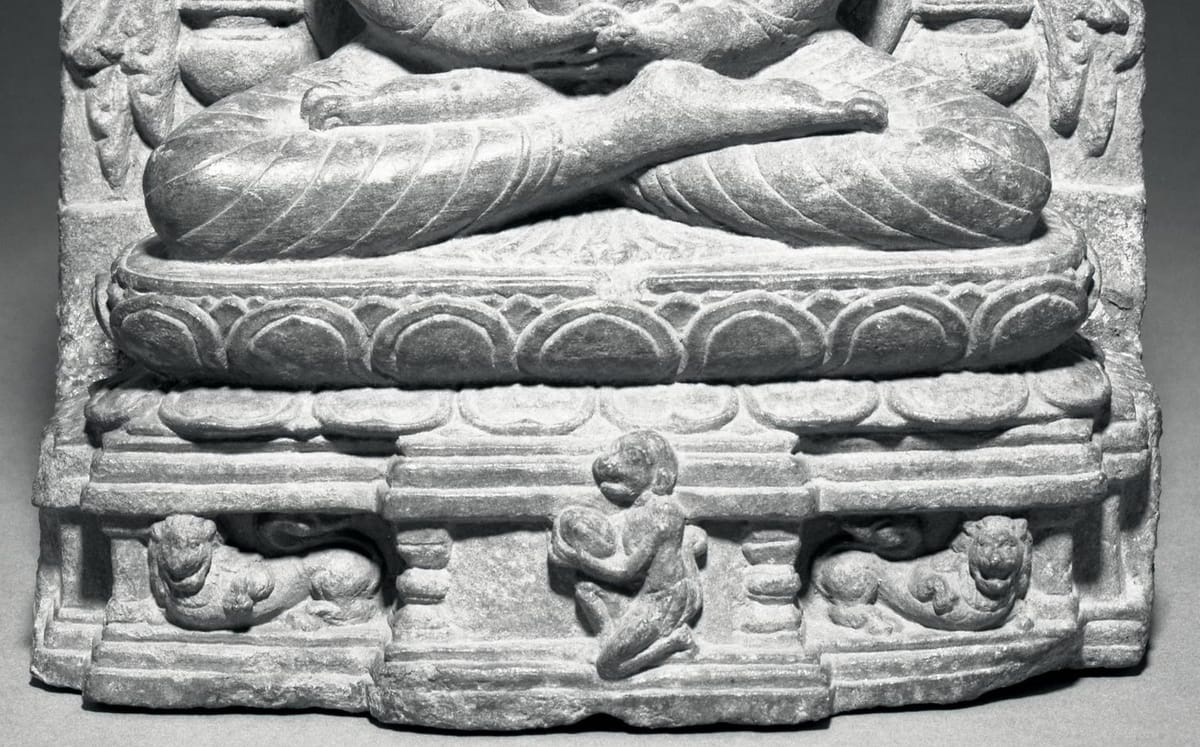
Now a monkey saw the elephant up and doing each day, performing the lesser duties for the Tathagata, and he said to himself. "I'll do something too." One day, as he was running about, he happened to see some stick-honey free from flies. He broke the stick off, took the honey-comb, stick and all, broke off a plaintain-leaf, placed the honey on the leaf, and offered it to the Teacher. The Teacher took it. The monkey watched to see whether or not he would eat it. He observed that the Teacher, after taking the honey, sat down without eating. "What can be the matter?" thought he. He took hold of the stick by the tip, turned it over and over, carefully examining it as he did so, whereupon he discovered some insect's eggs. having removed these gently, he again gave the honey to the Teacher. The Teacher ate it.
The monkey was so delighted that he leaped from one branch to another and danced about in great glee. But the branches he grasped and the branches he stepped on broke off. Down he fell on the stump of a tree and was impaled. So he died. And solely because of his faith in the Teacher he was reborn in the World of the Thirty-three in a golden mansion thirty leagues in measure, with a retinue of a thousand celestial nymphs.
Buddhist Legends [Dhammapada Atthakatha] by Eugene Watson Burlingame, Part 1, p. 180
Buddhist Legends, I. 5. The Quarrelsome Monks of Kosambi
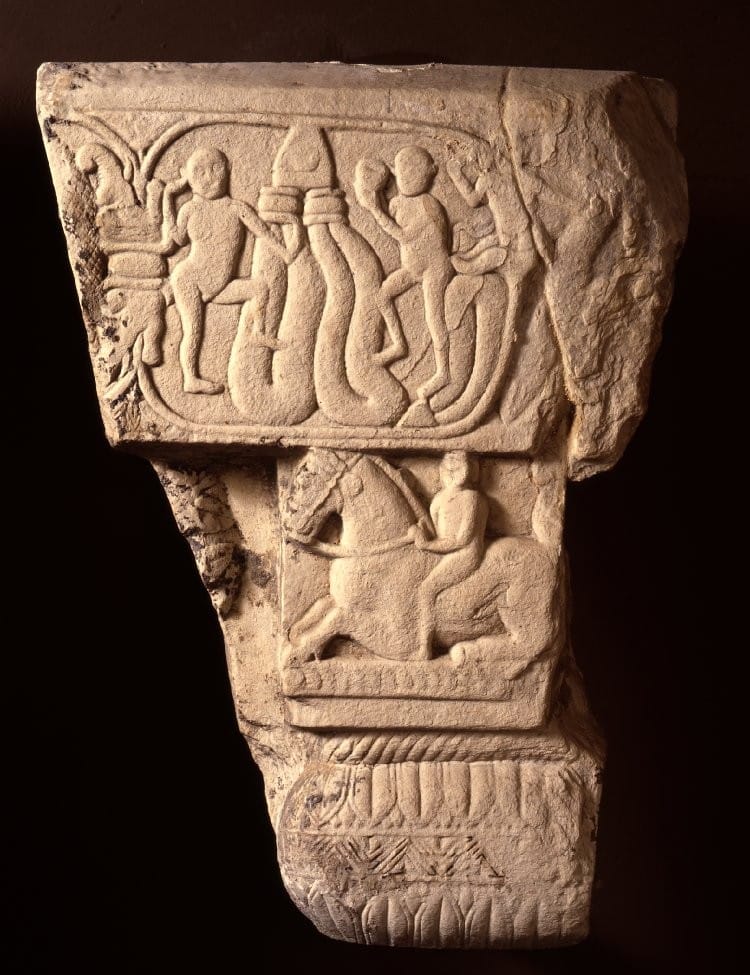
This story is visible on a fragmented slab preserved in the British Museum. Here one monkey stands with a bowl in his left hand. To the left is another monkey seated on a leaf. Another monkey stands to the left with the garland.
Amaravati Art in the Context of Andhra Archaeology | Sreyashi Ray
Monkey offers honey to Buddha, Amaravati, British Museum, London
The textual sources, all of them relatively brief, contain a number of story variations. For example, the citiy in which the event takes place varies with the source. The story itself, however, is fairly consistent. A monkey steals the Buddha's begging bowl, climbs a tree and fills it with honey, and returns it to the Buddha as a gift. Once the Buddha accepts the offering, the monkey becomes overcome with excitement and falls into a well and dies.
BROWN, ROBERT L. “Telling the Story in Art of the Monkey’s Gift of Honey to the Buddha.” Bulletin of the Asia Institute 23 (2009): 43–52. http://www.jstor.org/stable/24049422.
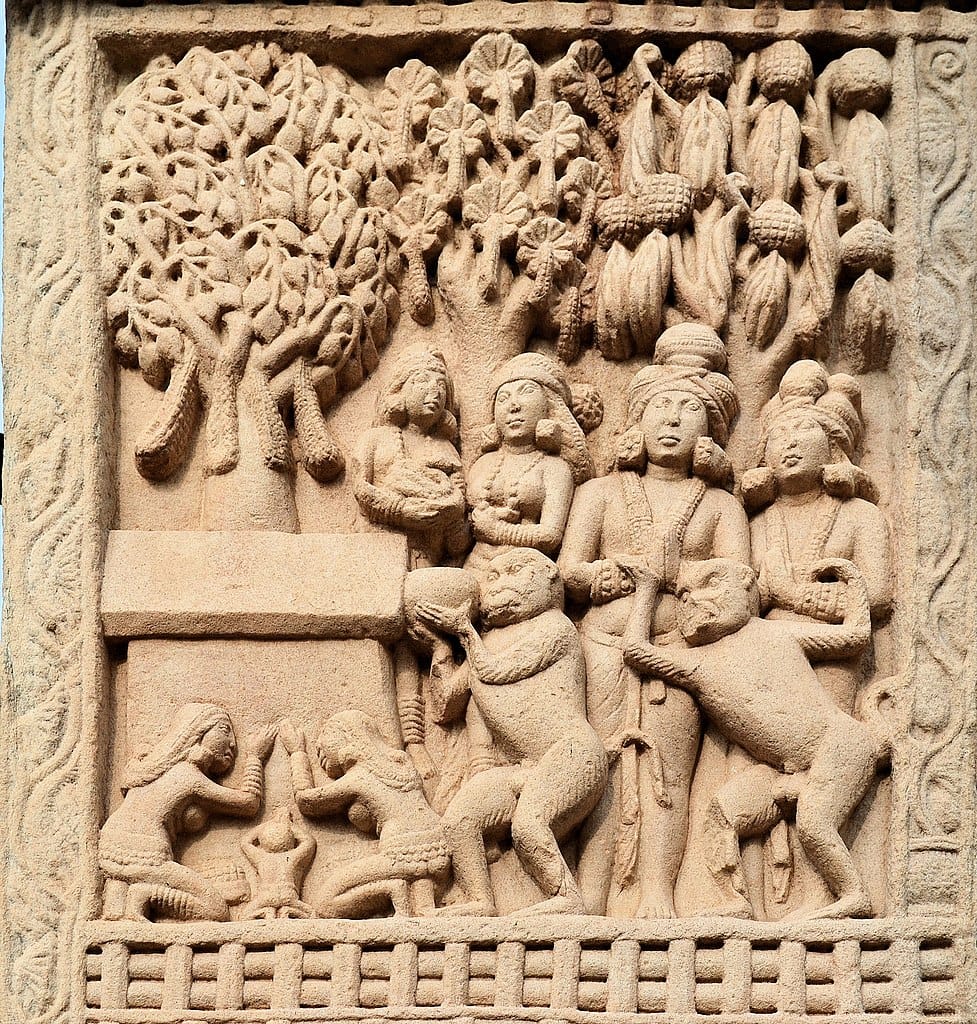
Offering of a bowl of honey to the Blessed One by a monkey Sanchi Stupa 1 Northern Gateway Nandanupadhyay, CC BY-SA 3.0, via Wikimedia Commons
Second panel:- The offering of a bowl of honey to the Blessed One by a monkey. Buddha is here represented by his pipal tree and throne, to which devotees are doing obeisance (PI. VI b). The figure of the monkey is twice repeated, first with the bowl and then with empty hands after the gift has been made. The incident is portrayed in much the same way on the reliefs of Gandhara.
footnote: The incident is usually located at Vaisali, but other authorities place it at Mathura or Sravasti. See Foucher, L' Art Grecobouddhique, p. 512.
A Guide To Sanchi by Marshall, John, 1918, pg. 58
Eight Scenes of the Buddha’s Life (PDF) Asian Art Museum Education, San Francisco
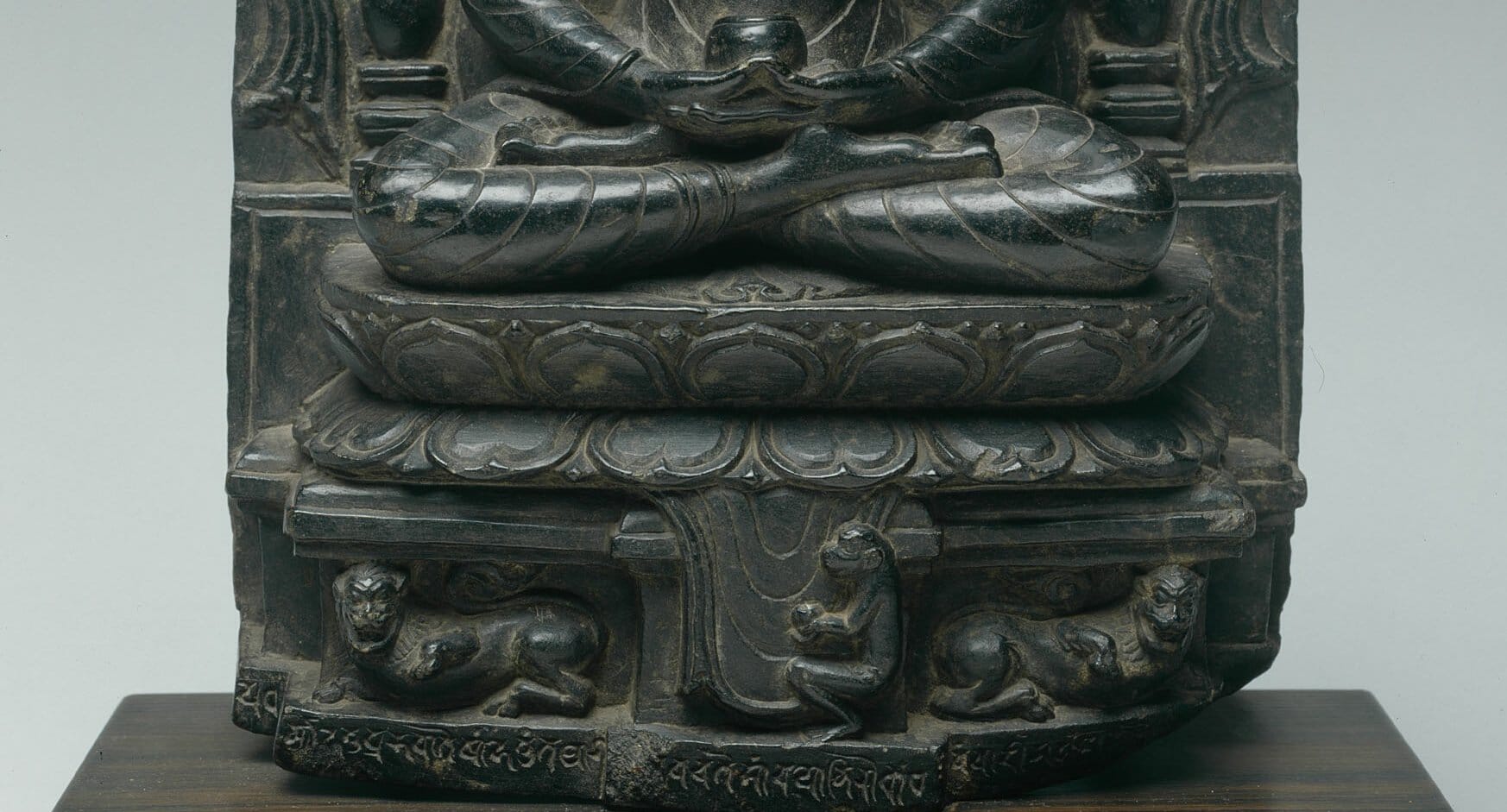
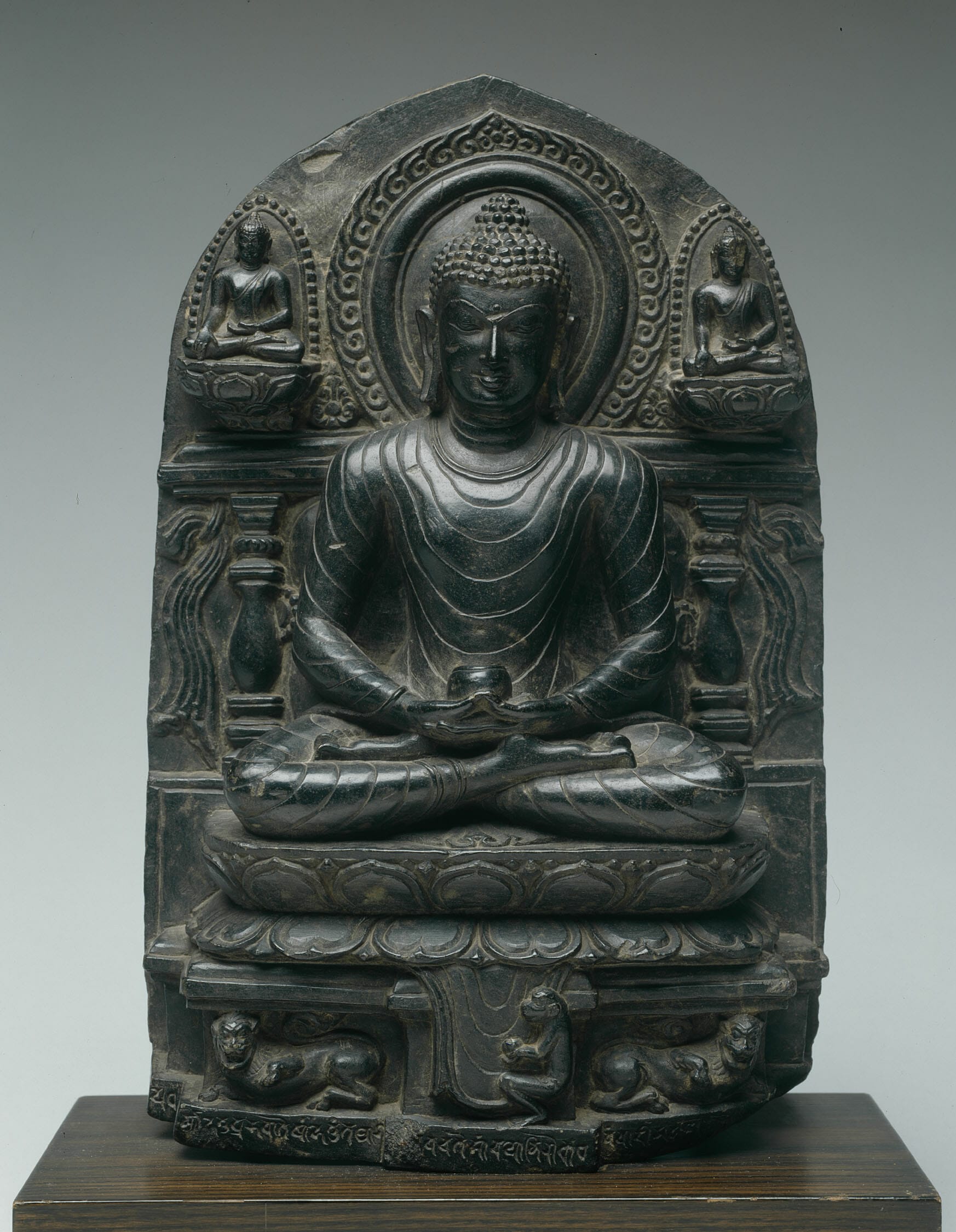
Stele with Episode from the Life of the Buddha (Monkey Offers Honey to the Buddha) Pala period, 10th century, India Bihar
There are two versions of the story of the monkey’s gift of honey to the Buddha. One is found in a variety of textual sources, primarily Chinese and Tibetan texts that are translations of Indic texts. There are scattered representations in Indian art up until the eighth century when they become very popular in Indian art associated with the city of Vaiśalī. The second version of the honey gift is in Pali sources when a monkey presents the Buddha with honey in the Parileyyaka Forest, a story that is frequently depicted in the art of Thailand. My paper contrasts how the textual sources are used in these two versions and proposes two different modes of narration are at play.
Abstract, Robert L. Brown, "Telling the Story in Art of the Monkey’s Gift of Honey to the Buddha"
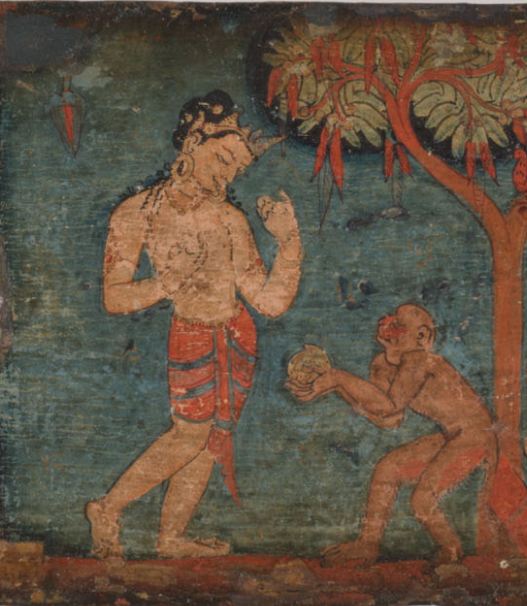
In the center, the Buddha in a former life receives a gift of honey from a monkey.
Pair of Manuscript Covers with Buddhist Scenes, Nepal (Kathmandu Valley) 12th century
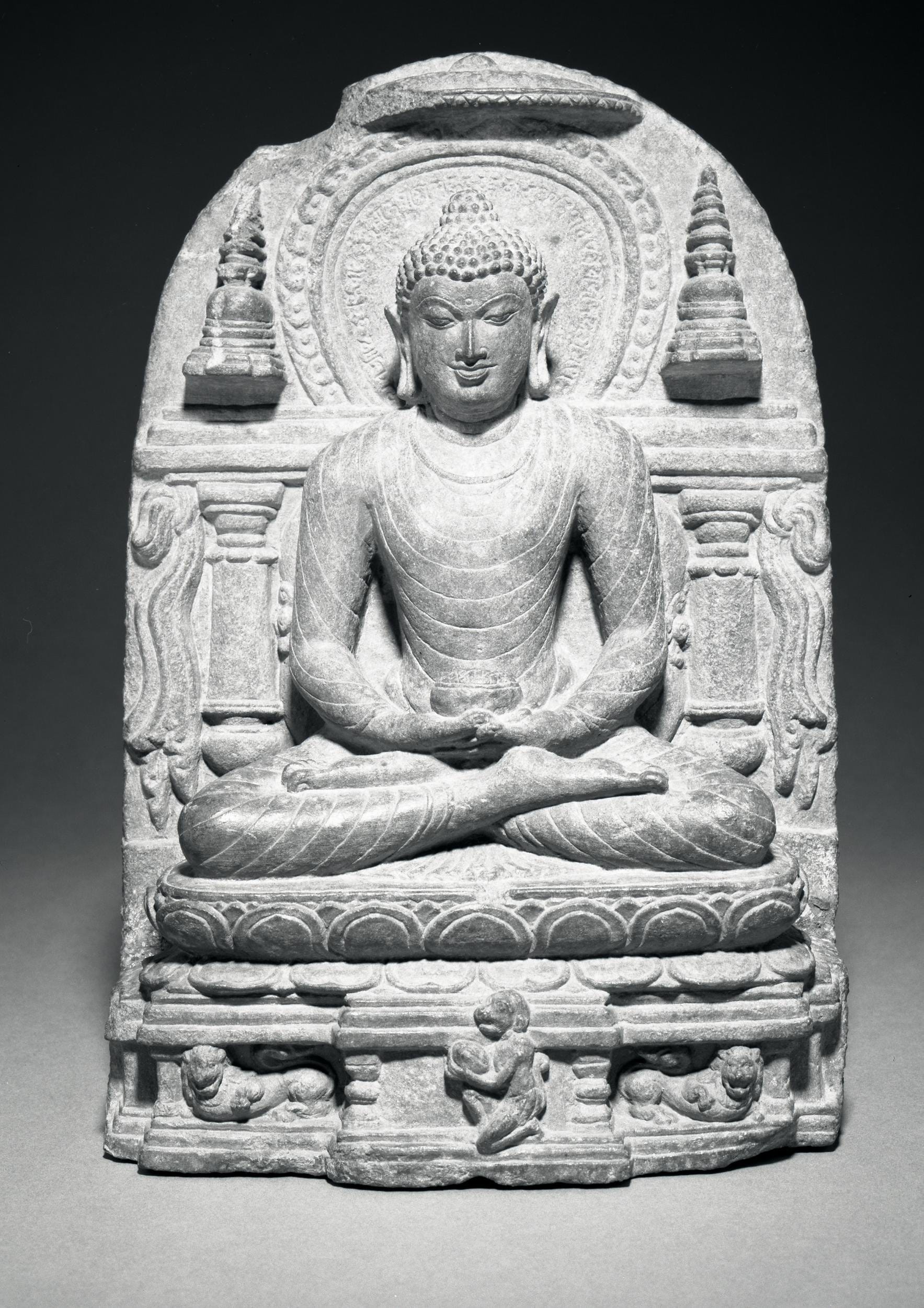
Figure (Buddha). A monkey presenting honey to the Buddha. Made of stone (basalt). Asia: South Asia: India: Bihar (State): Gaya District: Bodhgayā, 10thC,
Parileyya, Parileyyaka, Pārileyya, Pārileyyaka
The term Parileyyaka means "Protected Forest," and is so named due to the elephant who marches up and down during the night with a club in his trunk to protect the Buddha. At times, however, the text uses the term as the name of the elephant.
BROWN, ROBERT L. “Telling the Story in Art of the Monkey’s Gift of Honey to the Buddha.” Bulletin of the Asia Institute 23 (2009): 43–52. http://www.jstor.org/stable/24049422.
